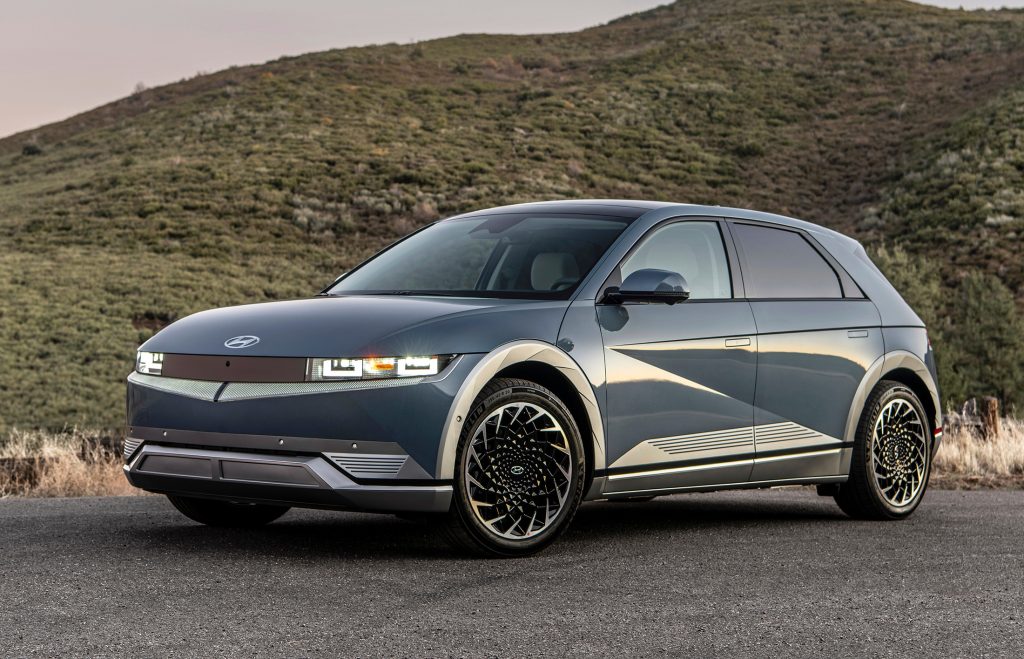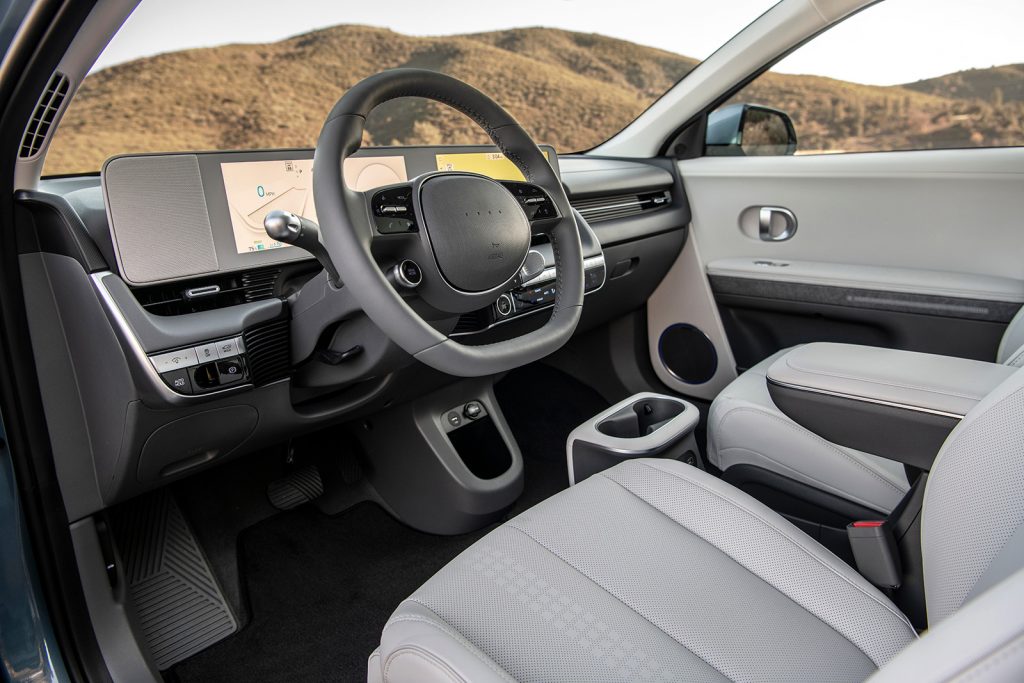Cargazing
By Derek Price
I was determined to give the Hyundai Ioniq 5 the toughest real-world test I’d ever done in an electric car.
With my cousin in town for the weekend, I’d lined up a whole series of events — concerts, museums, hiking, meals and more — with a tight schedule over three days, and I wanted to do it all using electrons, not gasoline, as my power source.
Driving all over the Dallas metro area meant we’d be racking up hundreds of miles in the Ioniq 5, Hyundai’s new electric crossover vehicle with futuristic looks and family-friendly versatility. The route would drastically exceed my tester’s EPA-estimated range of 256 miles, which could be a challenge considering I don’t even have a 220-volt fast charger at home.
The Ioniq 5 had an ace up its sleeve, though: the ability to charge using ultra-fast, 350-kilowatt charging stations if I could find them.
There are only a handful of chargers capable of delivering that level of juice in my area, which is understandable considering there are only a handful of cars for sale today capable of using them.
Hyundai claims those ultra-fast chargers can fill the Ioniq 5’s battery from 10 percent to 80 percent in only 18 minutes. In my real-world test, admittedly with the heater running on a frigid day to keep the cabin comfortable, the Electrify America charger I used took it from 20 percent to 80 percent in 32 minutes.

Hyundai’s new battery-powered SUV, the Ioniq 5, can travel up to 303 miles on a full charge in its extended-range version. It also utilizes ultra-fast, 350-kW charging stations to keep a packed schedule on track.
I kept it charging another 25 minutes at a slower rate to completely top it off. It cost $19.87 in total for less than an hour of ultra-fast charging — very expensive by electricity standards, but worth it to keep my schedule on track. Electrify America’s ion pumps worked as promised, keeping the car going all over town before I could slowly charge it up back home.
The slower, far-more-common Level 2 chargers that are widely available did a good job supplementing the range as needed, often for free or for a few pennies.
I wondered, though, whether I’d like this car as much if the weather was 110 degrees outside. Long walks from the charging points to my destinations aren’t so bad when you’re bundled up on a chilly day. Doing the same thing in the middle of a typical Texas August could make me absolutely hate electric cars.
The Ioniq 5 itself looks like a conventional crossover, albeit a space-age one. Sharp creases, wrap-around headlights and a recurring motif of square grids on the taillights and stamped into the interior give this conventional liftback, four-door crossover a bit of a Star Trek vibe.
My tester, the dual-motor version with all-wheel drive, took off from stoplights like a rocketship. The sensation of being launched from a slingshot, with virtually no noise at all, is surreal when you mash the pedal to the floor.
Despite the EPA’s rating of 256 miles of range, my real-world figure was closer to 200 miles when fully charged. I’m not sure if that’s because of cold weather or this car’s history of being flogged by journalist after journalist, but it never estimated anywhere close to the promised range.

The Ioniq 5’s interior is inspired by nature, using colors from the natural world and Earth-friendly materials that complement its high-tech vibe.
The question I often get asked, of course, is whether I’d buy an electric car. My answer is even more unequivocal after seeing what the Ioniq 5 can do with ultra-fast chargers: yes, but only if I had a gasoline car for road trips. I spend too much time traveling for it to work for 100 percent of my driving.
For 95 percent of where I go, though — including when there’s a packed agenda with little time for range anxiety — an electric car can do the job. The range, space, comfort and economy in the Ioniq 5 make that even more appealing.
Pricing starts at $39,700 for the SE with standard range of 220 miles and a 125-kW motor. You can get up to 303 miles of rated range with the upgraded 168-kW motor starting at $43,650. Finally, the all-wheel-drive version I tested comes with two electric motors, 74 and 165 kW, that offer fantastic acceleration and a range of 256 miles starting at $47,150.
All prices are before any federal or state tax credits.
At A Glance
What was tested? 2022 Hyundai Ioniq 5 Limited AWD ($54,500). Options: Carpeted floor mats ($195). Price as tested (including $1,225 destination charge): $55,920
Wheelbase: 118.1 in.
Length: 182.5 in.
Width: 74.4 in.
Height: 63 in.
Powertrain: Dual electric motors (320 combined horsepower)
Transmission: Single speed reduction gear
Fuel economy: 110 MPGe city, 87 highway
RATINGS
Style: 9
Performance: 8
Price: 10
Handling: 6
Ride: 7
Comfort: 8
Quality: 8
Overall: 9
Why buy it?
With space, comfort, range and ultra-fast charging capability, the Ioniq 5 is a great EV for everyday life. It’s strong competition for the few pricey, luxury-brand electric SUVs on the market today.
